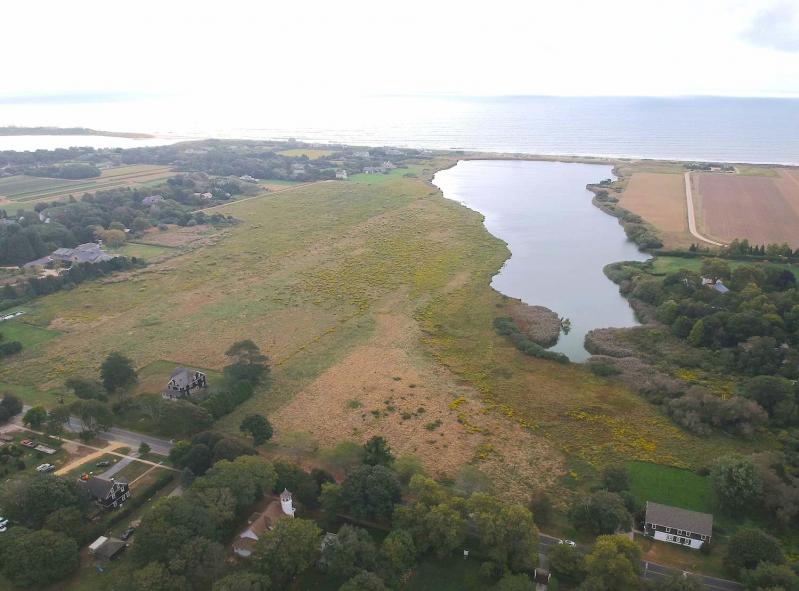East Hampton Town will hold a hearing on Oct. 17 on what would be the largest community preservation fund purchase in its history, $56 million for 30 acres south of Wainscott Main Street.
“Word has gotten out and people are ecstatic,” Supervisor Kathee Burke-Gonzalez said at a town board meeting Tuesday.
The town has $85.5 million unencumbered in its community preservation fund. If successful, the purchase will represent over 65 percent of that.
The land was purchased in 2021 by Ronald Lauder for $66 million to prevent development. He owns multiple adjacent parcels. It borders Wainscott Pond and is in an agricultural overlay district and a harbor protection overlay district. Nonetheless, the New York State Department of Environmental Conservation considers the pond, which is owned by the East Hampton Town Trustees, "impaired" and has placed it on its "priority waterbodies" list. It is the site of frequent blue-green algae blooms.
Francis Bock, the clerk of the trustees, said in a town press release, that the trustees are "thrilled to collaborate with the town on improving the water quality in Wainscott Pond." Should the purchase go through, it will allow public access to the water body for the first time "but also allow us to increase the vital monitoring and implement necessary improvements," Mr. Bock said. "Our commitment to restoring the health of this impaired water body is unwavering, and we are eager to work together on initiatives that will combat harmful algal blooms and protect our community's valuable aquatic ecosystems for future generations."
The grassland that borders the eastern side of the pond is also increasingly rare on Long Island. The 30-acre area is one of the only consistent places on the East End to see the eastern meadowlark, for example. Six years ago, a rare western cattle egret alighted there. Nearly 150 species of birds have been viewed just from the roadside looking toward the ocean. Over 70 species of grasses, wildflowers, and shrubs thrive in the meadow. However, invasives, such as the autumn olive and Chinese silver grass, have also taken hold, and with the purchase, the town will develop a management plan for their removal.
"Acquiring 66 Wainscott Main Street is an essential step toward preserving one of our town's most iconic landscapes," said Supervisor Burke-Gonzalez. "This property represents not just a view, but a commitment to maintain our community's sense of place. Mr. Lauder's vision and dedication to protecting our community's natural and historical heritage set a remarkable example for us all. We are grateful for his generosity and leadership in this vital effort."
The land is also rich with history and intertwined with the Osborn family, with descendants still living nearby. John Osborn built a homestead in Wainscott around 1668 and is considered its founder.
Purchasing the land "is a heartfelt tribute to the legacy of my ancestors," Hilary Osborn Malecki, a descendent of the Osborn family, said in a release from the town. "This land has been a part of our family for generations, and its preservation honors the history and values that have shaped Wainscott."
Scott Wilson, the director for land acquisition for the town, said in a phone call Monday that he wasn't daunted by the purchase price. "Whatever we spend today will be replenished. We've never had quite this much money in the C.P.F. before." Whether Mr. Lauder would have kept the parcel undeveloped was an open question. Mr. Wilson that said upon his death, his heirs might be faced with the choice to subdivide the property in order to pay the tax bills. "How many houses could fit on that parcel? With the wetlands I'd say at least four nice sized houses, behind huge hedges." He said it's possible, given a positive public hearing, that the town could close on the parcel in about three months.
The hearing will be held on Oct. 17 at 6 p.m. at Town Hall.




